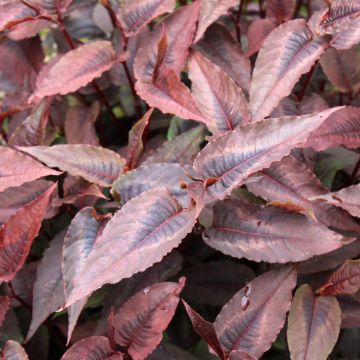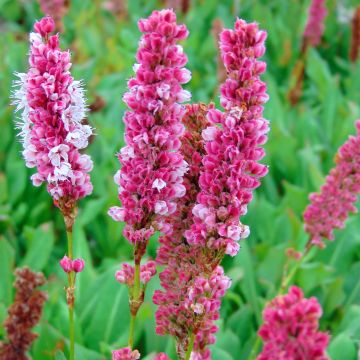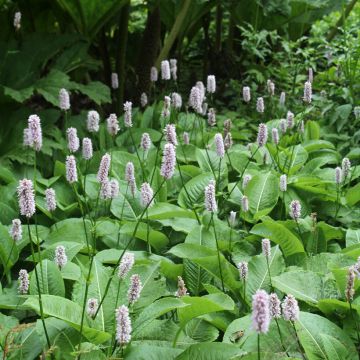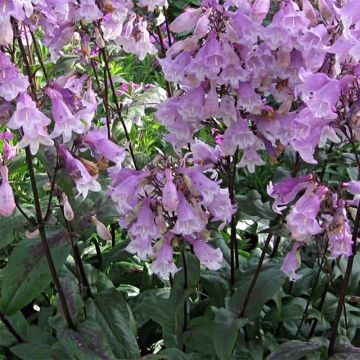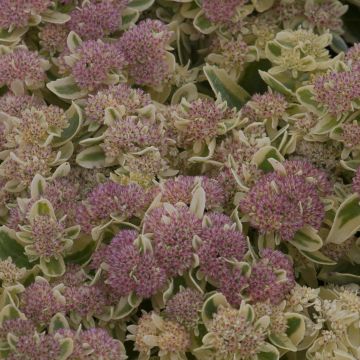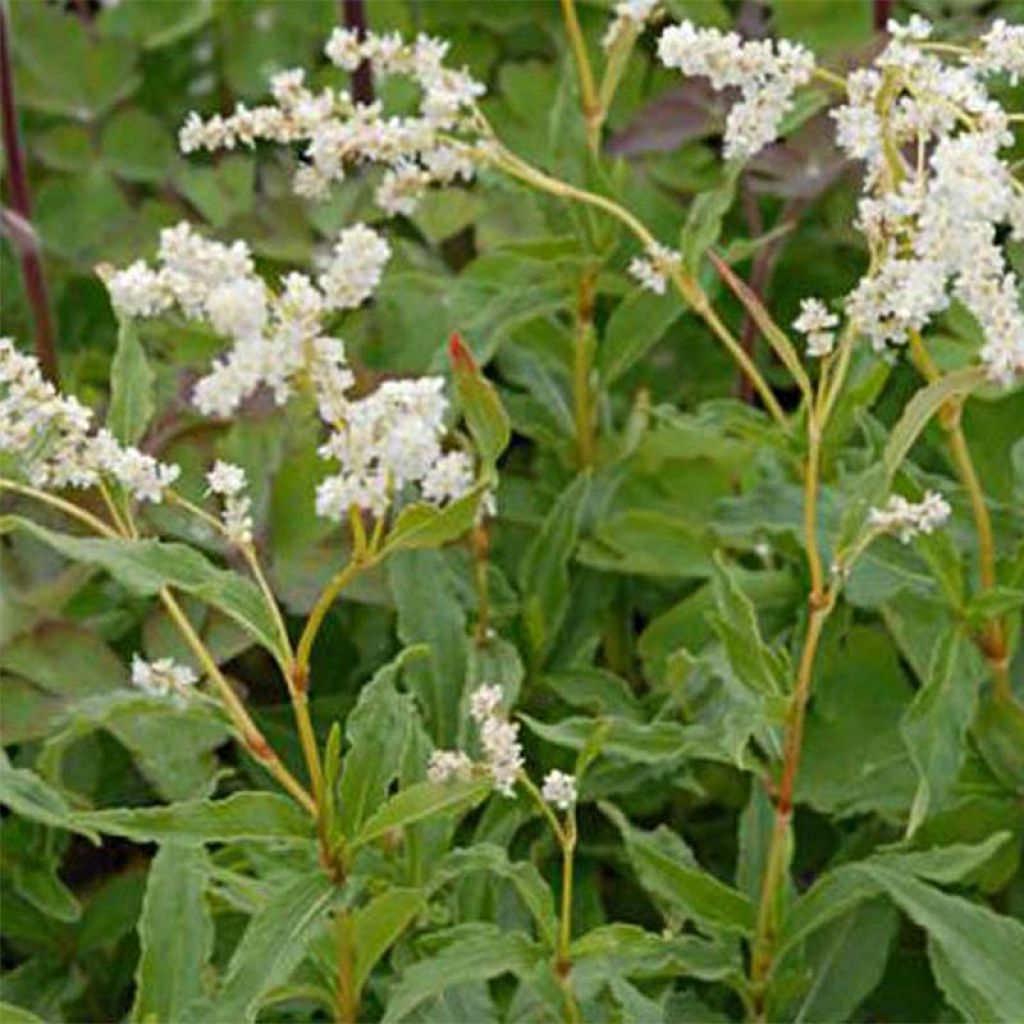

Aconogonon tortuosum var. glabrifolium
Aconogonon tortuosum var. glabrifolium
Aconogonon tortuosum var. glabrifolium
Persicaria kahil
No result this season
Emmanuel D., 02/11/2020
Why not try an alternative variety in stock?
View all →This plant carries a 12 months recovery warranty
More information
We guarantee the quality of our plants for a full growing cycle, and will replace at our expense any plant that fails to recover under normal climatic and planting conditions.
From €5.90 for pickup delivery and €6.90 for home delivery
Express home delivery from €8.90.
Does this plant fit my garden?
Set up your Plantfit profile →
Description
Aconogonon tortuosum var. glabrifolium, better known as Persicaria kahil, is a rare knotweed full of qualities, both robust, hardy and floriferous, with rapid growth, perfect in a natural or wild garden. It forms a good ground cover with shiny green foliage that turns rusty brown in winter. It establishes itself vigorously, producing countless short spikes of small white flowers in summer. It will thrive in ordinary garden soil, in sun or partial shade. It integrates well into a low-maintenance wild or naturalistic garden, like Solomon's seals or bearded irises.
The Aconogonon tortuosum var. glabrifolium is part of the Persicaria or Polygonum family, which has changed names many times and belongs to the Polygonaceae family. The botanical species tortuosum is native to Asia, particularly Siberia, the Himalayas, Pakistan, and Nepal. It is an entirely deciduous rhizomatous perennial plant in winter. It forms a clump about 80 cm (32in) tall when in flower and spreads quite rapidly, depending on the richness of the soil: it can form impressive clumps after several years. But the subspecies glabrifolium is a low-growing ground cover, not exceeding 30 to 50 cm (12 to 20in) in height, with a very long summer flowering period that smells of wildflower honey, especially when the sun comes out after rain, from June to September. Many short spikes, 5 cm (2in) long, composed of numerous small pure white honey-scented flowers with prominent stamens and formed by five tepals, emerge at the ends of green leafy stems. The leaves, carried by sturdy stems, are lanceolate and have a beautiful, shiny green colour that enhances other flowering plants. They measure about 3 to 5 cm (1 to 2in) long and have a rough, thick texture.
Very accommodating and perfectly robust, this knotweed fits well in wild environments, requiring little space and maintenance. It can be planted at the base of trees or shrubs as it appreciates root competition, along with perennial geraniums, Solomon's seals, meadowsweets, meadow rues, or other comfreys, in areas of the garden that are a bit neglected, or even in rockeries to form borders or to adorn a pot. It enjoys both sun and partial shade and tolerates occasional drought. It likes rich and deep, fresh soil and cool and semi-shaded woodland areas where it can serve as a worry-free ground cover.
Report an error about the product description
Aconogonon tortuosum var. glabrifolium in pictures


Flowering
Foliage
Plant habit
Botanical data
Aconogonon
tortuosum var. glabrifolium
Polygonaceae
Persicaria kahil
Koenigia tortuosa var. glabrifolia
Himalayas
Other Persicaria
Planting and care
Persicaria kahil thrives in shaded or semi-shaded exposure and does not like scorching sun. It is a very easy plant to grow even in dry shade. Plant it in any type of soil as long as it is fresh, clayey or rich in humus. Plant in spring or autumn in groups to create a mass effect. Control the growth so that it does not harm neighbouring plants. Mulch the soil in June in areas where the summer is hot and dry. Divide the clumps in October every three years and replant the plants in another part of the garden.
Planting period
Intended location
Care
-
, onOrder confirmed
Reply from on Promesse de fleurs
Summer flowering perennials
Haven't found what you were looking for?
Hardiness is the lowest winter temperature a plant can endure without suffering serious damage or even dying. However, hardiness is affected by location (a sheltered area, such as a patio), protection (winter cover) and soil type (hardiness is improved by well-drained soil).

Photo Sharing Terms & Conditions
In order to encourage gardeners to interact and share their experiences, Promesse de fleurs offers various media enabling content to be uploaded onto its Site - in particular via the ‘Photo sharing’ module.
The User agrees to refrain from:
- Posting any content that is illegal, prejudicial, insulting, racist, inciteful to hatred, revisionist, contrary to public decency, that infringes on privacy or on the privacy rights of third parties, in particular the publicity rights of persons and goods, intellectual property rights, or the right to privacy.
- Submitting content on behalf of a third party;
- Impersonate the identity of a third party and/or publish any personal information about a third party;
In general, the User undertakes to refrain from any unethical behaviour.
All Content (in particular text, comments, files, images, photos, videos, creative works, etc.), which may be subject to property or intellectual property rights, image or other private rights, shall remain the property of the User, subject to the limited rights granted by the terms of the licence granted by Promesse de fleurs as stated below. Users are at liberty to publish or not to publish such Content on the Site, notably via the ‘Photo Sharing’ facility, and accept that this Content shall be made public and freely accessible, notably on the Internet.
Users further acknowledge, undertake to have ,and guarantee that they hold all necessary rights and permissions to publish such material on the Site, in particular with regard to the legislation in force pertaining to any privacy, property, intellectual property, image, or contractual rights, or rights of any other nature. By publishing such Content on the Site, Users acknowledge accepting full liability as publishers of the Content within the meaning of the law, and grant Promesse de fleurs, free of charge, an inclusive, worldwide licence for the said Content for the entire duration of its publication, including all reproduction, representation, up/downloading, displaying, performing, transmission, and storage rights.
Users also grant permission for their name to be linked to the Content and accept that this link may not always be made available.
By engaging in posting material, Users consent to their Content becoming automatically accessible on the Internet, in particular on other sites and/or blogs and/or web pages of the Promesse de fleurs site, including in particular social pages and the Promesse de fleurs catalogue.
Users may secure the removal of entrusted content free of charge by issuing a simple request via our contact form.
The flowering period indicated on our website applies to countries and regions located in USDA zone 8 (France, the United Kingdom, Ireland, the Netherlands, etc.)
It will vary according to where you live:
- In zones 9 to 10 (Italy, Spain, Greece, etc.), flowering will occur about 2 to 4 weeks earlier.
- In zones 6 to 7 (Germany, Poland, Slovenia, and lower mountainous regions), flowering will be delayed by 2 to 3 weeks.
- In zone 5 (Central Europe, Scandinavia), blooming will be delayed by 3 to 5 weeks.
In temperate climates, pruning of spring-flowering shrubs (forsythia, spireas, etc.) should be done just after flowering.
Pruning of summer-flowering shrubs (Indian Lilac, Perovskia, etc.) can be done in winter or spring.
In cold regions as well as with frost-sensitive plants, avoid pruning too early when severe frosts may still occur.
The planting period indicated on our website applies to countries and regions located in USDA zone 8 (France, United Kingdom, Ireland, Netherlands).
It will vary according to where you live:
- In Mediterranean zones (Marseille, Madrid, Milan, etc.), autumn and winter are the best planting periods.
- In continental zones (Strasbourg, Munich, Vienna, etc.), delay planting by 2 to 3 weeks in spring and bring it forward by 2 to 4 weeks in autumn.
- In mountainous regions (the Alps, Pyrenees, Carpathians, etc.), it is best to plant in late spring (May-June) or late summer (August-September).
The harvesting period indicated on our website applies to countries and regions in USDA zone 8 (France, England, Ireland, the Netherlands).
In colder areas (Scandinavia, Poland, Austria...) fruit and vegetable harvests are likely to be delayed by 3-4 weeks.
In warmer areas (Italy, Spain, Greece, etc.), harvesting will probably take place earlier, depending on weather conditions.
The sowing periods indicated on our website apply to countries and regions within USDA Zone 8 (France, UK, Ireland, Netherlands).
In colder areas (Scandinavia, Poland, Austria...), delay any outdoor sowing by 3-4 weeks, or sow under glass.
In warmer climes (Italy, Spain, Greece, etc.), bring outdoor sowing forward by a few weeks.



































